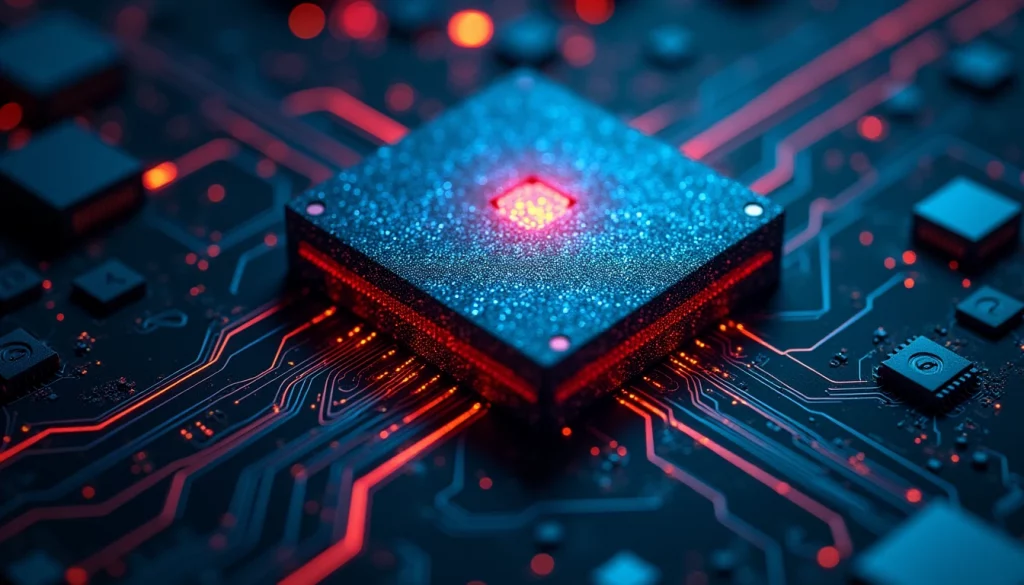Quantum computing is an emerging field that leverages the principles of quantum mechanics to perform complex calculations and solve problems exponentially faster than classical computers. While this technology has the potential to revolutionize various industries, it also poses significant challenges for cybersecurity. In this article, we will explore the impact of quantum computing on cybersecurity in depth.
Understanding Quantum Computing
Quantum computers use quantum bits or qubits, which can exist in multiple states simultaneously, a concept known as superposition. Unlike classical bits that are either 0 or 1, qubits can be both 0 and 1 at the same time. Additionally, qubits interact with each other through entanglement, allowing for parallel processing of vast amounts of data.
The power of quantum computing comes from its ability to perform many calculations simultaneously by manipulating these qubit states. This enables quantum computers to solve complex optimization problems, simulate molecular structures, and factor large numbers exponentially faster than classical computers. However, this same power presents a threat to current cybersecurity systems, which are heavily based on the security of classical cryptography.
The Threat to Cryptographic Systems
The backbone of modern cybersecurity is encryption, which relies on complex mathematical algorithms to scramble and protect sensitive data. Many widely used encryption methods, such as RSA and Diffie-Hellman key exchange, rely on the difficulty of factoring large numbers or performing discrete logarithms.
Quantum computers have the potential to break these cryptographic systems by utilizing algorithms like Shor’s algorithm, which can factor large numbers exponentially faster than classical computers. This means that data encrypted with current methods could potentially be decrypted using quantum computing, compromising the security of past and present communications.
Furthermore, even if new quantum-resistant encryption algorithms are developed, the threat persists due to the potential for an attacker to store intercepted data now and decrypt it in the future when quantum computers become more powerful. This concept is known as a “harvest now, decrypt later” attack.
Quantum-Safe Cryptography
In response to this looming threat, researchers are actively working on developing new cryptographic systems that can withstand attacks from both classical and quantum computers. These are known as post-quantum or quantum-resistant cryptography.
Some of the main approaches being explored include lattice-based encryption, hash-based signatures, multivariate polynomial equations, and supersingular isogeny-based cryptography. These methods aim to provide security even in the presence of powerful quantum computers by relying on mathematical problems that are believed to be hard for both classical and quantum computers to solve.
Governments and organizations like NIST (National Institute of Standards and Technology) are also working to standardize these new cryptographic algorithms, ensuring a smooth transition from current systems as quantum computing becomes more advanced.
Quantum Key Distribution
Another critical area in cybersecurity is secure key distribution. Current methods rely on the difficulty of intercepting and eavesdropping on communication channels to keep encryption keys secret. However, quantum computers could potentially crack these systems through attacks like Shor’s algorithm or by exploiting vulnerabilities in the physical layer.
Quantum key distribution (QKD) offers a potential solution. QKD utilizes the principles of quantum mechanics, such as Heisenberg’s uncertainty principle and the no-cloning theorem, to securely distribute encryption keys between two parties. By detecting any eavesdropping attempts through the disturbance caused to the quantum states, QKD can provide unconditional security.
However, implementing QKD on a large scale is challenging due to factors like distance limitations, interference from environmental noise, and the need for specialized quantum communication infrastructure. Researchers are actively working on improving QKD systems and developing new protocols to overcome these challenges.

The Future of Cybersecurity in the Quantum Era
As quantum computing continues to advance, it is crucial for organizations to start preparing for a post-quantum world. This involves several steps:
1. Staying informed about the latest developments in quantum computing and its potential impacts on cybersecurity.
2. Conducting risk assessments to identify which systems are most vulnerable to quantum attacks and prioritizing their protection.
3. Adopting quantum-resistant cryptographic algorithms as they become available and standardized by organizations like NIST.
4. Investing in research and development of new security technologies, such as post-quantum cryptography, secure multi-party computation, and homomorphic encryption.
5. Collaborating with industry peers, academia, and government agencies to share knowledge, resources, and best practices for quantum-safe cybersecurity.
It’s important to note that the transition to a quantum-safe world will be gradual, and classical systems will likely remain in use for some time. However, taking proactive steps now can help ensure a smoother and more secure transition as quantum computers become more powerful and accessible.
Quantum computing presents both significant opportunities and challenges for cybersecurity. While this technology has the potential to revolutionize many industries, it also threatens the security of current cryptographic systems. To mitigate these risks, organizations must stay informed about the latest developments in post-quantum cryptography, quantum key distribution, and other quantum-safe technologies.
By taking proactive steps now, such as conducting risk assessments, adopting quantum-resistant algorithms, and investing in research and development, we can help ensure a more secure future in the era of quantum computing. As with any major technological shift, the transition to quantum-safe cybersecurity will require ongoing effort, collaboration, and adaptation. But by embracing these challenges head-on, we can harness the power of quantum computing while protecting our most valuable digital assets.



